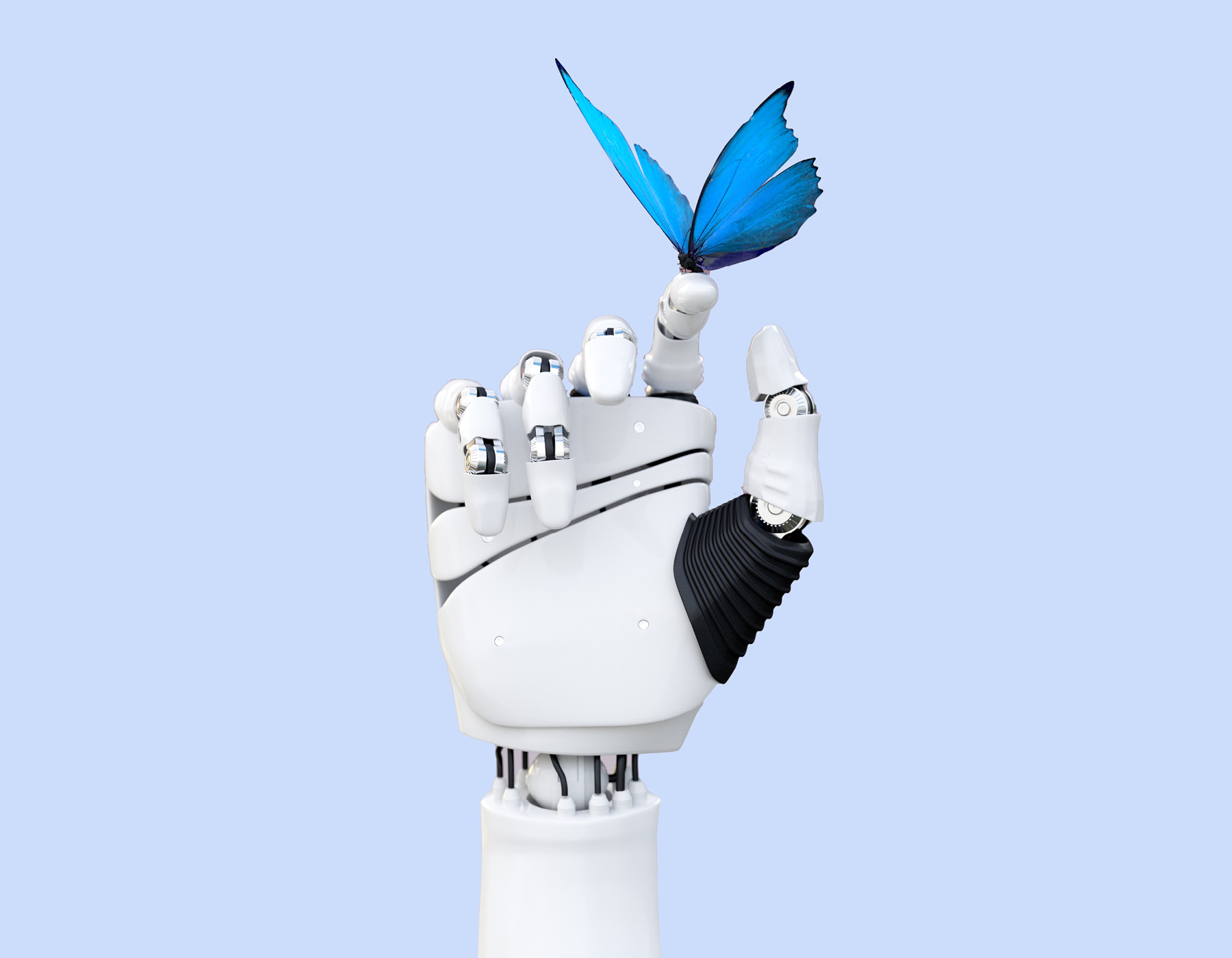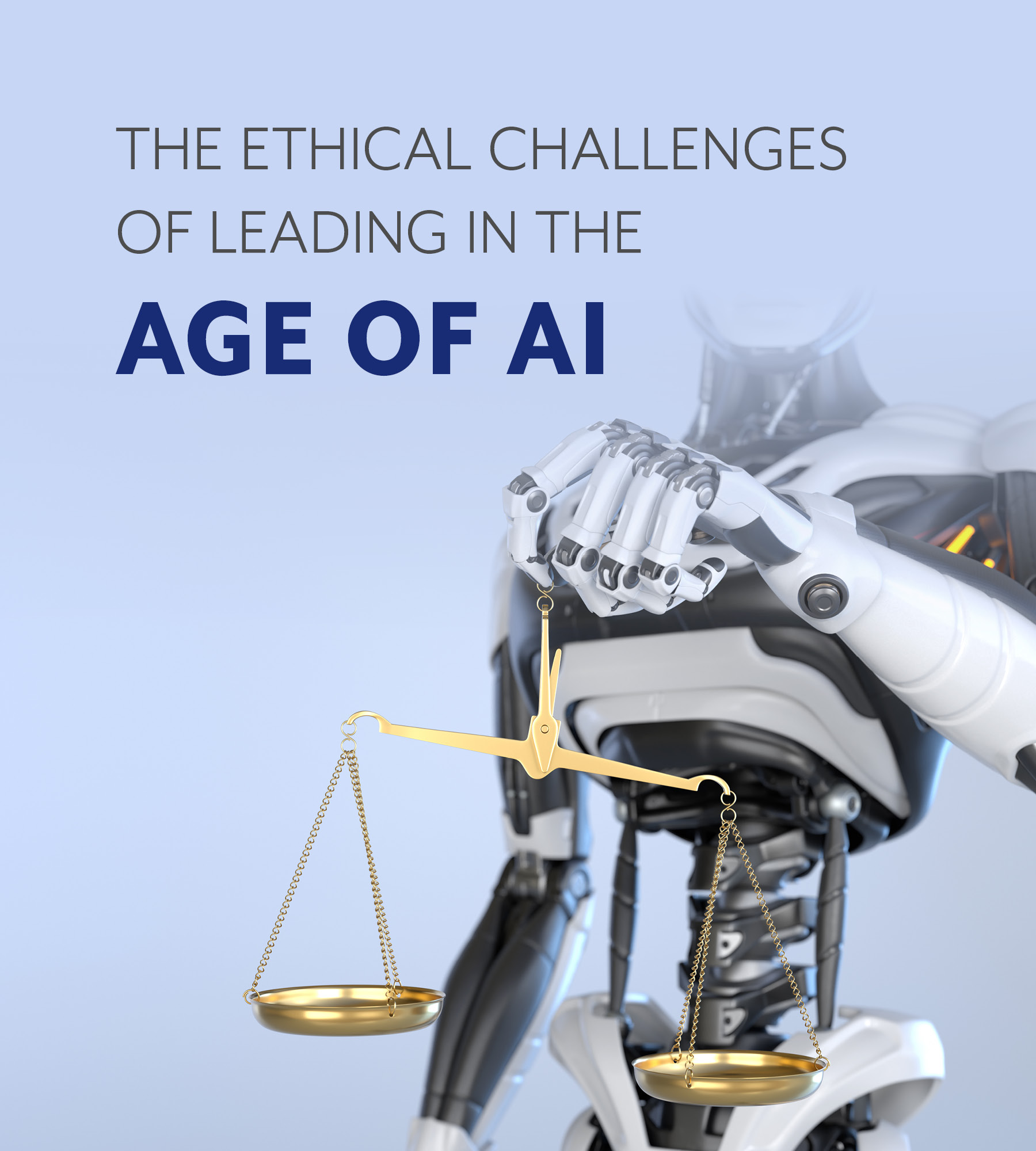Language
You can read the magazine in one of the following languages
Depending on which side of the AI divide you sit on, AI will either ruin workplaces and destroy jobs or be a productivity bonanza.
With AI evolving at an unprecedented rate, balancing the opportunities from technological change with ethical responsibilities is imperative. In striking the optimal balance, the critical consideration for leaders is how to leverage the technology wisely and be ready to make the most of it.
Both questions are vital. Leaders need to understand technology’s consequences, particularly as they can sometimes be unintentional. They must also prepare themselves and their teams, because it’s here whether you like it or not.
For leaders to successfully navigate these changes, they need to ensure they are fully informed and aware of AI’s challenges.
Brian Green, the Director of Technology Ethics at the Markkula Center for Applied Ethics at Santa Clara University, has identified 16 central issues. These issues include concerns around transparency of AI use and safeguarding user privacy; bias in data sources, which can lead to discriminatory outcomes; being clear on where the responsibility lies and ensuring ethical guidelines for AI deployment; and impacts on jobs.
In 2017, Genpact research found that only a quarter of people surveyed were concerned about AI’s impact on the workforce right now; instead, they were more concerned about what it meant for their children or later generations.
More recent research from SnapLogic found that 72 percent of Australians welcomed AI’s use in their role, compared to an average of 66 percent, with respondents in the United Kingdom the least inclined at 61 percent. However, 34 percent of respondents felt that very few people in their organization had the skills to implement and adopt AI successfully.

Leaders need to understand technology’s consequences, particularly as they can sometimes be unintentional.
Just as organizations undertake scenario planning to help them investigate and plan for unknown risks, this is a helpful approach when planning for potential AI changes. Look ahead, examine where your industry, organization and profession is heading, and consider possible pathways and options that could eventuate.
By conducting thorough impact assessments, you can better understand the use and impacts of AI in the context of your role, team, clients and customers, and communities.
Using these insights, you can determine how far you need to pivot and adapt, and you can proactively address workforce transitions and any necessary reskilling or upskilling for your team.
When ChatGPT was first released, some sectors immediately banned its use. However, a better approach was to find ways to work with the technology, as Antony Aumann from Northern Michigan University did. He explained in a New York Times article how when he saw the prevalence of its use, he changed how students were assessed, weaved ChatGPT into the lessons and asked students to evaluate the chatbot’s responses.
Investigate the benefits and options. Ask yourself: How can it save time? Where could it improve processes and output? How can it be best blended with the work my team and I lead? Explore and play with the technology to test the boundaries.
Talk with your team about how and where it can be helpful because when employees see the benefits of working with it, they will more readily leverage its benefits to innovation and work quality.
However, not all employees will embrace AI readily. Don’t dismiss their concerns. Work with them and help them to navigate this changing landscape. It’s easier to adapt when a person can see the benefit and feels supported to try something new.
Not everything can be outsourced to technology, nor would you want to. Technology is excellent with processes but not with emotions and connection. A robot can’t connect, show compassion or provide the emotional support humans need to thrive.

Ethical leadership will be more critical than ever as leaders confront decisions they have not faced before.
That ‘special sauce’ that makes us all unique becomes even more critical in the age of AI.
Ethical leadership will be more critical than ever as leaders confront decisions they have not faced before.
Your integrity will be tested as you make choices around transparency, collective good and workforce changes. Consequently, you want to identify what you stand for, identify the issues that matter and be aware of the line you won’t cross.
In embracing ethical AI, seek input from the fields of technology, law, philosophy and sociology. Encourage collaboration to tackle complex challenges and regularly monitor AI systems for bias, discrimination and unintended consequences.
Leaders who navigate the ethical challenges of AI with integrity will drive innovation and ensure a future where technology serves humanity rather than harms it.

Michelle Gibbings
Contributor Collective Member
Michelle Gibbings is a workplace expert and the award-winning author of three books, including her latest, ‘Bad Boss: What to do if you work for one, manage one or are one’. For more information, go to https://www.michellegibbings.com/
